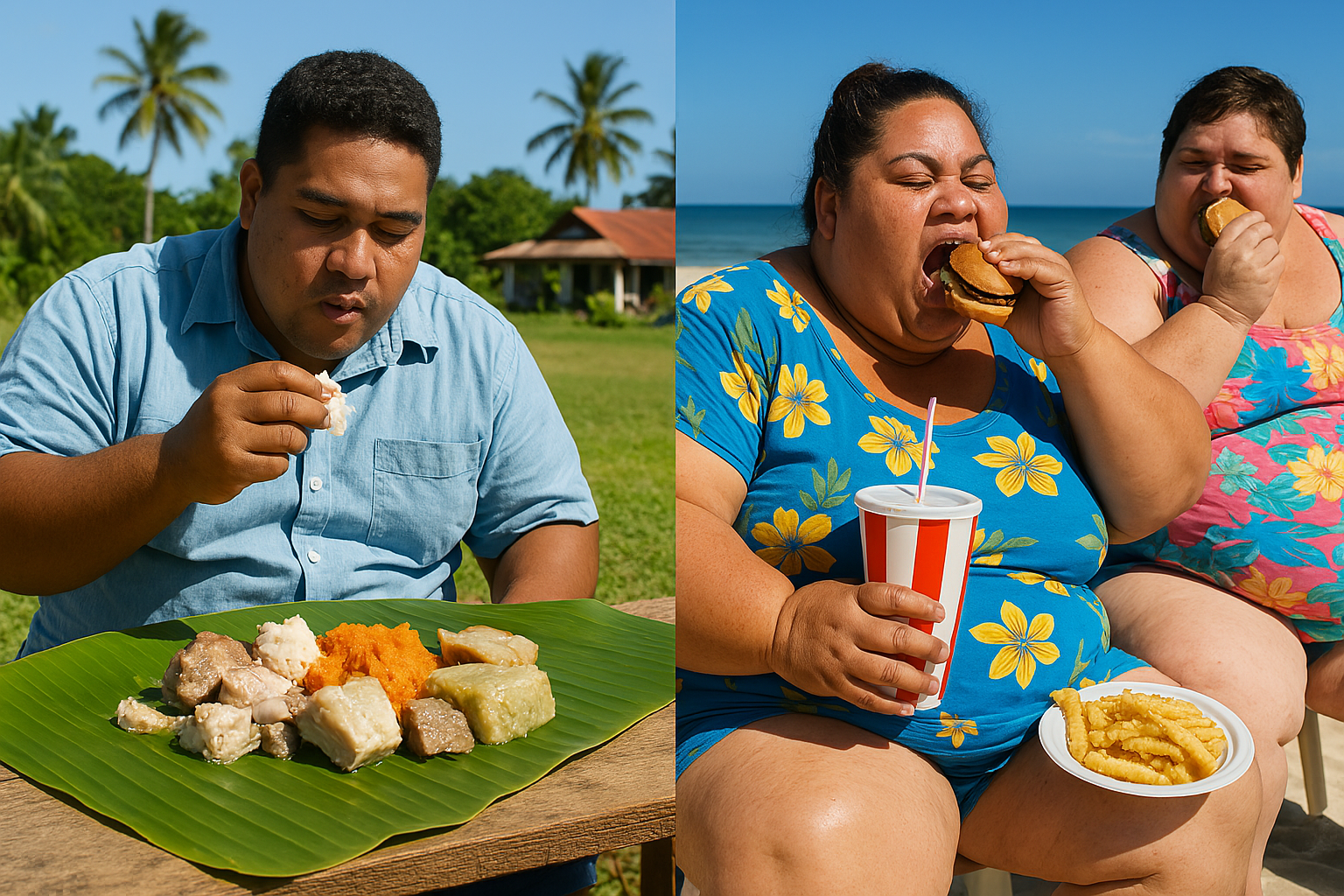In recent years, the South Pacific has become a surprising epicenter of the global obesity crisis. According to global health statistics, countries like Nauru, Tonga, and Samoa now rank among the most obese in the world, with over 80–90% of their adult populations classified as overweight or obese. But why is this region facing such a dramatic health challenge?
Let’s explore the underlying causes, cultural influences, economic dynamics, and what public health experts are doing to reverse the trend.
🌴 1. Cultural Perceptions of Body Size
In many South Pacific cultures, larger body sizes have traditionally been associated with health, wealth, strength, and beauty. Being “well-fed” was once a status symbol, particularly in island communities where food was scarce. While modernization has brought an influx of processed foods, some of these deep-rooted cultural ideals persist, making it more difficult to combat obesity from a behavioral standpoint.
Did you know? In some Pacific societies, being thin was once viewed as a sign of illness or poverty.
🛒 2. Shift to Imported, Processed Foods
One of the biggest contributors to obesity in the Pacific is the rapid transition from traditional diets to imported, ultra-processed foods. These imported products—high in sugar, fat, and salt—are often cheaper and more accessible than local foods.
What’s replacing traditional diets:
- Tinned meats and canned fish with added sodium
- Instant noodles
- Sugar-sweetened beverages
- White bread and packaged snacks
This “nutrition transition” has led to calorie-dense but nutrient-poor diets, often referred to as “empty calories.”
📉 3. Loss of Traditional Food Systems
Historically, Pacific Islanders thrived on root crops (taro, yam), fresh fish, coconut, and tropical fruits. However, globalization, land degradation, and urban migration have disrupted local agriculture and fishing practices.
With fewer people growing or catching their own food, there’s been increased dependence on store-bought, imported goods, often of poor nutritional quality.
🛋 4. Decreased Physical Activity
Urbanization has also contributed to more sedentary lifestyles. As more people migrate to towns and cities for work, traditional activities like farming, fishing, and walking long distances are being replaced by:
- Desk-based jobs
- Reliance on motorized transport
- Screen time (TV and mobile devices)
This drop in physical activity, combined with high-calorie diets, has created the perfect storm for rising obesity rates.
🏥 5. Weak Public Health Infrastructure
Many Pacific Island nations face limited healthcare budgets, personnel shortages, and insufficient preventive care systems. As a result, obesity-related conditions like type 2 diabetes, hypertension, and cardiovascular disease are often diagnosed late or poorly managed.
In some Pacific countries, over 40% of adults now have type 2 diabetes, a staggering figure that reflects the scale of the problem.
🌍 6. Globalization & Economic Pressures
Global trade policies and foreign food subsidies often flood local markets with cheap, unhealthy foods, while healthy local produce remains expensive or unavailable. Add to that the rising cost of living and climate change disruptions, and communities are pushed toward the cheapest and most convenient dietary options—even if they’re harmful.
🔄 7. Cycle of Intergenerational Obesity
Children in the South Pacific are increasingly exposed to poor diets and sedentary lifestyles from an early age. Many are gaining excess weight before the age of 10, putting them at risk for lifelong obesity and its complications. Without intervention, this creates a self-reinforcing cycle from one generation to the next.
✅ What Can Be Done?
To slow the tide of obesity, Pacific nations and global partners are starting to act. Some key strategies include:
- Reintroducing traditional food systems through farming and education
- Nutrition labeling and taxation of sugar-sweetened beverages
- Culturally sensitive health campaigns to redefine beauty and wellness
- International collaboration with the WHO and NGOs to improve healthcare capacity
Still, reversing such deeply entrenched health trends requires long-term, community-driven, and culturally tailored interventions.
📌 Final Thoughts
The skyrocketing obesity rates in the South Pacific are not due to individual failings—but the complex result of historical, economic, cultural, and global forces. Addressing this crisis requires compassion, awareness, and policies that empower Pacific communities to reclaim their health.
🔗 References
- World Health Organization. (2023). Obesity and Overweight Facts.
- Forbes Health. (2024). Obesity Statistics and Facts in 2025. https://www.forbes.com/health/weight-loss/obesity-statistics/
- World Bank Report on the Pacific Islands (2023). Economic & Health Impacts of Nutrition Transition.
- FAO. (2022). The State of Food and Agriculture in the Pacific.
- WHO Western Pacific Region (2024). Obesity and NCDs in the Pacific Islands.



